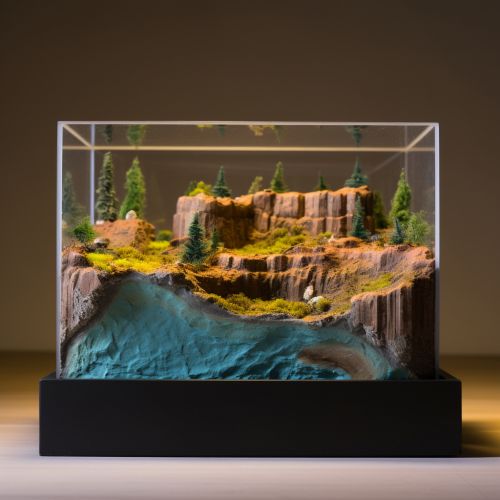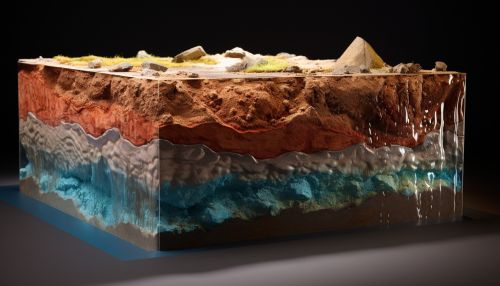Groundwater model
Introduction
Groundwater modeling is a scientific tool that is used to simulate and predict the behavior of groundwater in aquifers. It is a sub-discipline of hydrogeology, the study of water in the Earth's crust. Groundwater models are mathematical representations of the physical system that include the aquifer, the wells, the boundaries, and the contaminants. These models are used to understand groundwater flow and transport processes, and to predict future scenarios or the impact of human activities on groundwater resources.
Groundwater Basics
Groundwater is the water found underground in the cracks and spaces in soil, sand, and rock. It is stored in and moves slowly through geologic formations of soil, sand, and rocks called aquifers. Groundwater is replenished (recharged) by precipitation that infiltrates the ground and moves downward to fill up the cracks and spaces in the soil, sand, and rock. Groundwater can also be discharged to the surface naturally through springs, or it can be withdrawn for agricultural, municipal, and industrial uses by constructing and pumping wells.
Groundwater Modeling
Groundwater models are used to simulate and predict the behavior of groundwater in aquifers. The models are mathematical representations of the physical system that include the aquifer, the wells, the boundaries, and the contaminants. Groundwater models can be used to understand groundwater flow and transport processes, and to predict future scenarios or the impact of human activities on groundwater resources.


Types of Groundwater Models
There are several types of groundwater models, including analytical models, numerical models, and physical models.
Analytical models are mathematical solutions to simplified versions of the groundwater flow equation. They are often used for preliminary analyses or for problems that can be simplified to a few parameters.
Numerical models solve the groundwater flow equation on a grid or mesh. They can handle complex boundary conditions and heterogeneous aquifers, and are often used for detailed analyses and predictions.
Physical models are scaled-down representations of the actual groundwater system. They are often used for educational purposes or for testing numerical models.
Groundwater Flow Models
Groundwater flow models simulate the movement of water through an aquifer. They are based on Darcy's law, which states that the rate of flow of a fluid through a porous medium is proportional to the hydraulic gradient. The groundwater flow equation, also known as the groundwater continuity equation, is a differential equation that describes the flow of groundwater in an aquifer.
Groundwater Transport Models
Groundwater transport models simulate the movement of contaminants in groundwater. They are based on the advection-dispersion equation, which describes the transport of solutes in a fluid due to advection (movement with the fluid) and dispersion (spreading due to molecular diffusion and mechanical mixing).
Groundwater Management Models
Groundwater management models are used to optimize the use of groundwater resources. They often combine a groundwater flow model with an optimization algorithm to find the best solution to a given problem, such as maximizing water supply while minimizing pumping costs and maintaining groundwater levels above a certain threshold.
Groundwater Model Applications
Groundwater models are used in a variety of applications, including water resource management, contamination cleanup, and land use planning.
Water Resource Management
In water resource management, groundwater models are used to predict the impact of pumping on groundwater levels and streamflow, to design well fields, and to evaluate the sustainability of groundwater use.
Contamination Cleanup
In contamination cleanup, groundwater models are used to predict the spread of contaminants, to design remediation systems, and to evaluate the effectiveness of cleanup efforts.
Land Use Planning
In land use planning, groundwater models are used to predict the impact of land use changes on groundwater recharge and discharge, and to evaluate the impact of development on groundwater resources.
